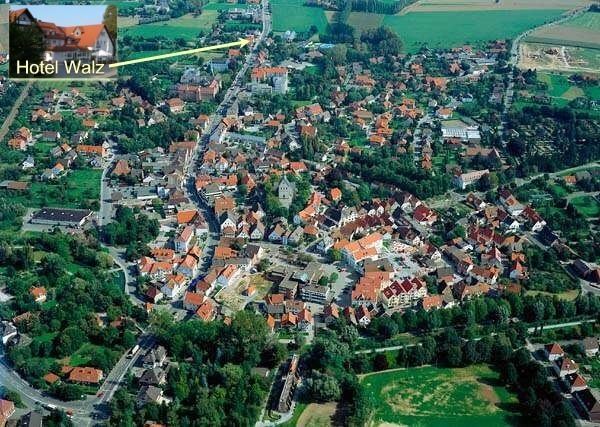Admin. region Detmold Elevation 97 m (318 ft) Area 109.4 km² Population 24,917 (30 Jun 2010) Administrative region Detmold | Time zone CET/CEST (UTC+1/+2) Local time Saturday 2:13 AM Dialling code 05258; | |
 | ||
Weather 12°C, Wind SW at 11 km/h, 68% Humidity | ||
Salzkotten is a town in the district of Paderborn, in North Rhine-Westphalia, Germany. The name Salzkotten (English: Salt cottage) is based on the former salt production, which gave Salzkotten its raison d'être. Salt was found in the salty springs around the city.
Contents
- Map of 33154 Salzkotten Germany
- Geography
- Administrational division
- Industry
- Population
- History
- Mayors
- Politics
- Culture
- Sons and daughters of the town
- References
Map of 33154 Salzkotten, Germany
Geography
Salzkotten is situated at the border between the flat park landscape of the Münsterland in the north, the Soest Börde in the west and the dry rocky mountains with many forests in the south. It has many small fountains and rivers bringing water from the mountains to the Rhine. It is located approximately 12 km south-west of Paderborn.
Administrational division
In 1975, the then city of Salzkotten (with nearly 6 000 inhabitants and 23.65 km²) was merged with nine municipalities to form the new city of Salzkotten (nearly 17 000 inhabitants and 109.40 km²):
Schwelle is commonly called United States of Holsen-Schwelle-Winkhausen because of its 3 tiny villages.
Industry
The economy of Salzkotten today focusses upon metal mining and refinery, machine manufacture, electronics, food production and services.
Resident Companies:
Reineke Brot
The bakery Reineke Brot founded in 1889 by Johann and Theresa Reineke and still in the ownership of the family. They bake various types of whole grain wheat, rye and mixed wheat/rye breads as well as some pastries. Their specialty in this area of expertise is bismarks - jelly filled doughnuts. The flour used in their products is locally grown and ground in their own mill which lies in Paderborn.
Gilbarco Veeder-Root
In 1865, Charles Gilbert and John Barker partnered to build the "Springfield Gas Machine" that converted crude petroleum distillates into a gas vapor used to light buildings. 1910, Gilbert & Barker designed and manufactured their first petroleum pump the T-1, used push-pull motion to draw gasoline from an underground tank for fueling automobiles. Pumps are produced at headquarters Salzkotten, Germany.
Population
Detailed data about the population can be found here.
History
Salzkotten was founded in 1247, but documents exist which indicate that salt production was already occurring in 1160. Before the city's foundation, there were a number of farms and villages, which were broken down and rebuilt within the new city walls.
Mayors
Politics
The politics of Salzkotten are dominated by the conservative CDU. Since World War II, the CDU is the biggest party in the city council (German: Stadtrat). Since the 2014 local election, there are 5 groups in the city council (38 seats):
The Mayor of Salzkotten is Ulrich Berger (CDU). He was elected in 2014 with 70.3 of the votes%.
Culture
The city has three significant annual celebrations: the Sälzerfest (salt producers' festival), the Schützenfest (fair featuring shooting matches) and the Hederauenfest. The Schützenfest itself is an event that takes place in many towns and cities across the state.
